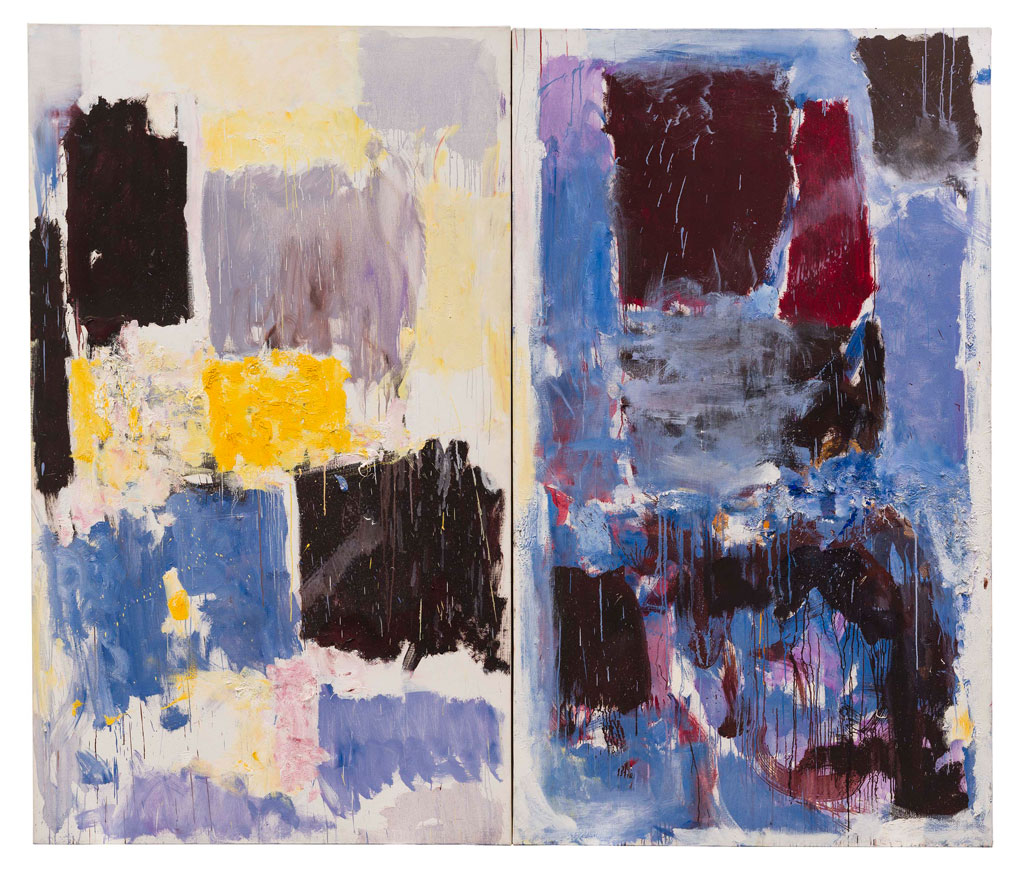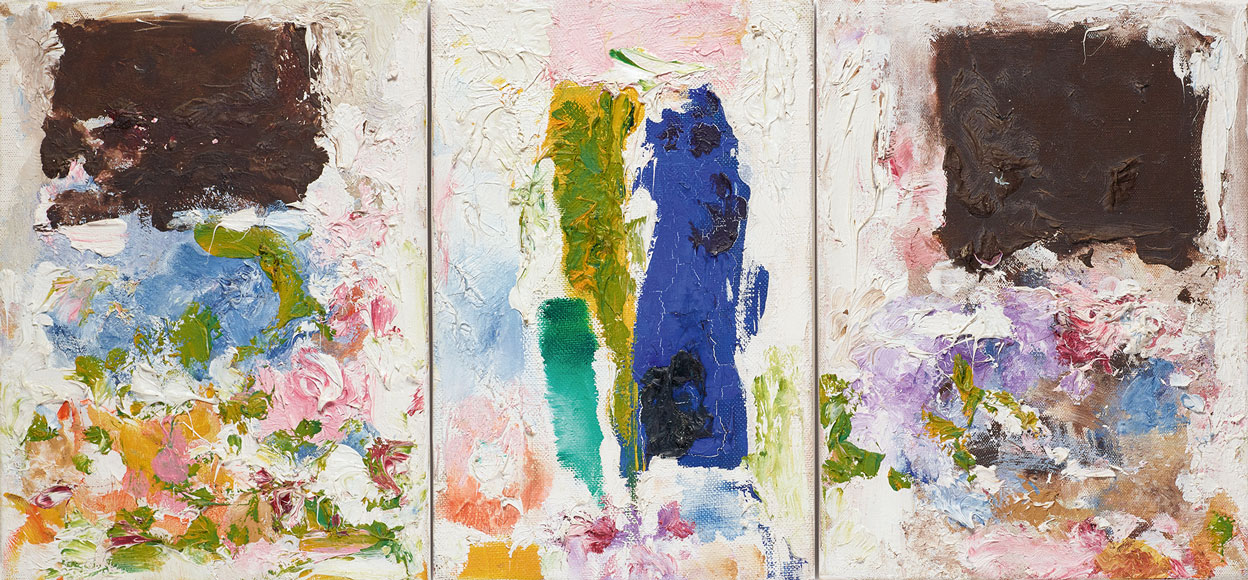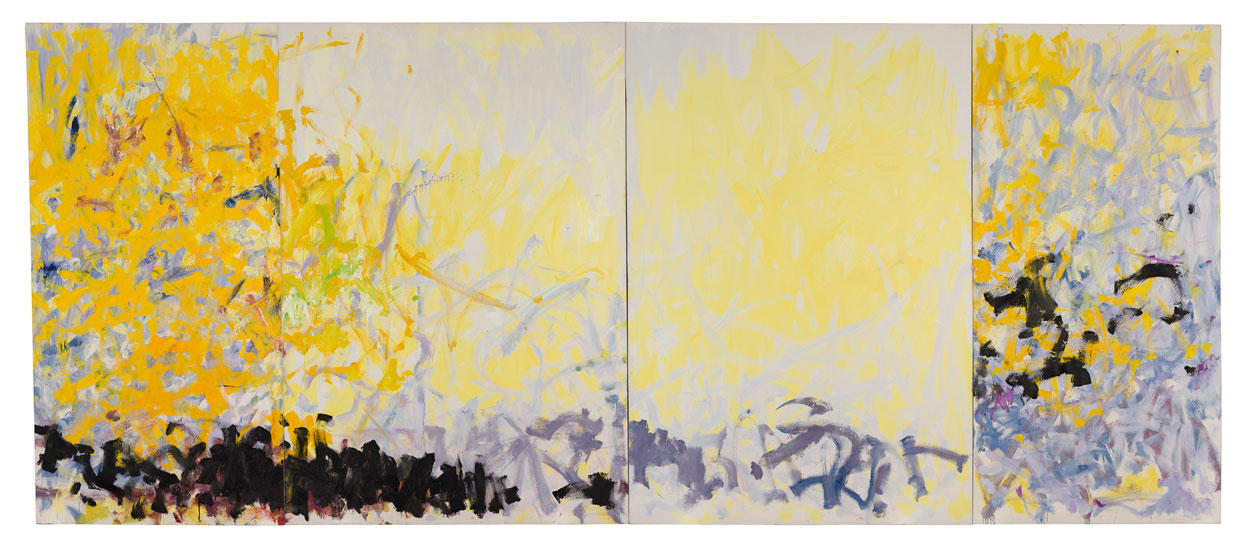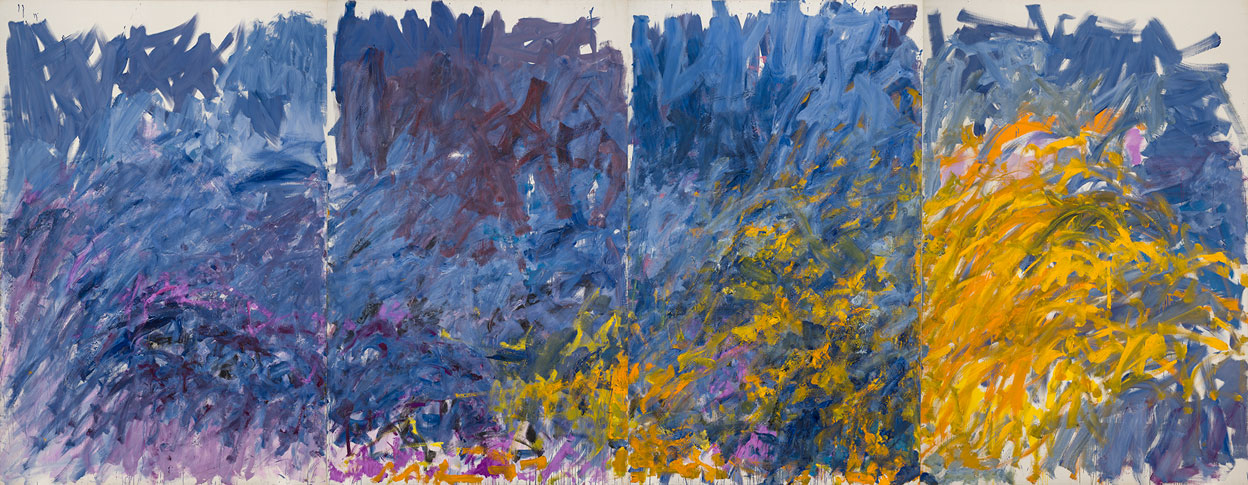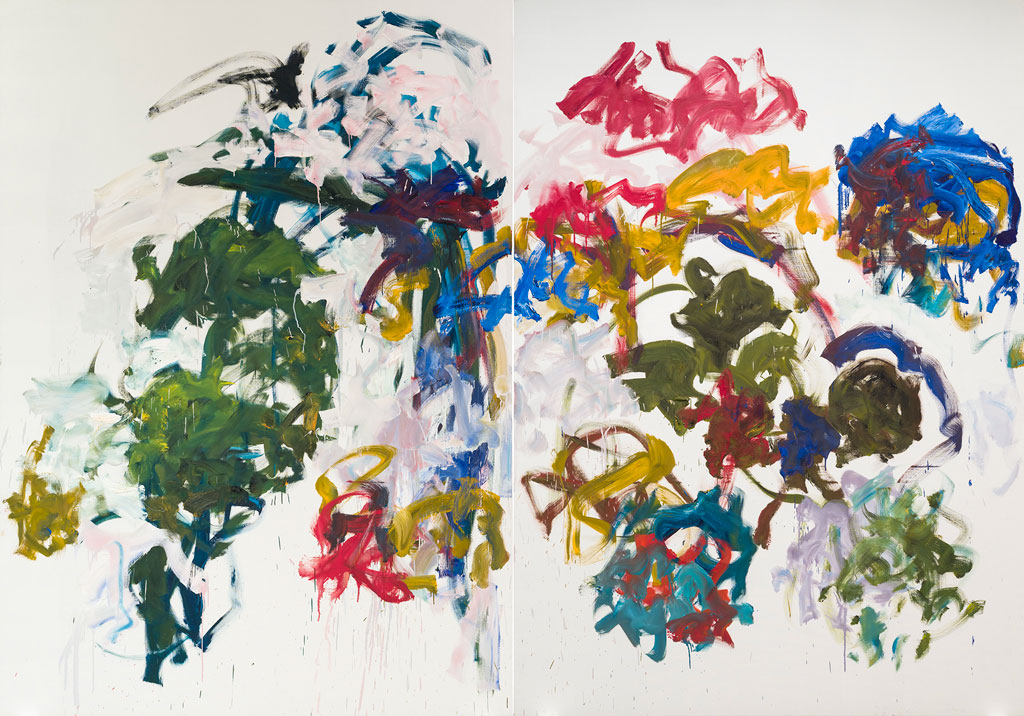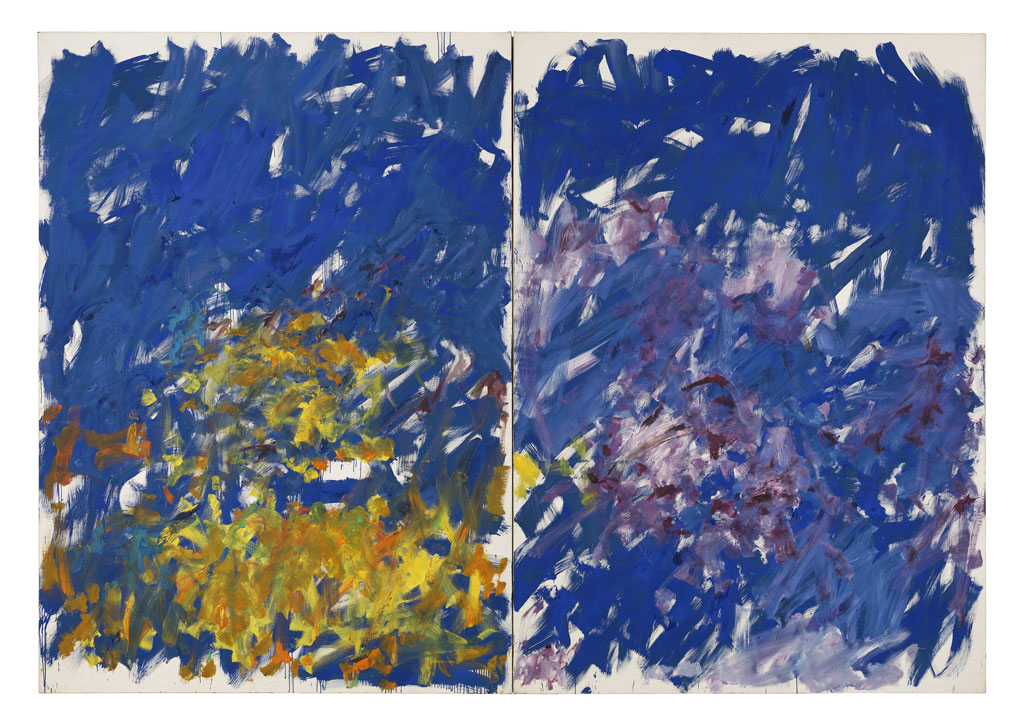ART-PRESENTATION: Joan Mitchell-I Carry My Landscapes Around With Me
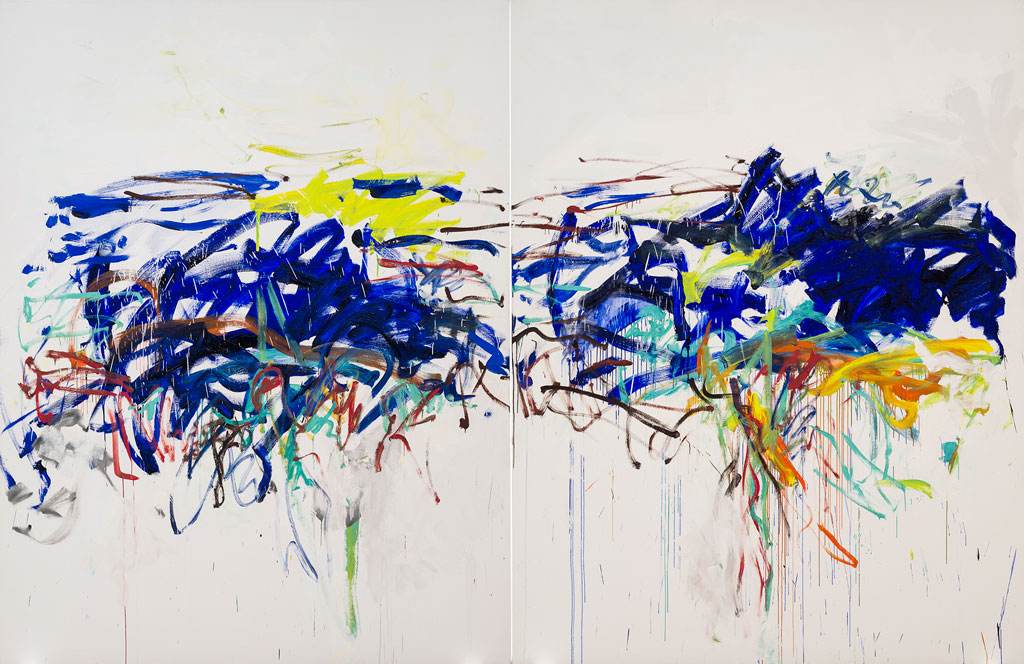
Joan Mitchell is recognized as a principal figure and one of the few female artists in the second generation of American Abstract Expressionists, after the aesthetic breakthroughs of Willem de Kooning and Franz Kline. Her early works are characterized as turbulent and related to personal bereavement. Working for the most part on multiple panels or large-scale canvases, she strived to evince a natural, rather than constructed, rhythm from the composition, which emanated from the expansiveness of her gesture and from her uninhibited use of color.
By Efi Michalarou
Photo: David Zwirner Gallery Archive
Joan Mitchell established a singular approach to abstraction over the course of her career. Spanning four decades of Joan Mitchell’s career the exhibition “I carry my landscapes around with me” at David Zwirner Gallery focus on her multipaneled paintings and features paintings from both Public and Private collections as well as holdings drawn from the Joan Mitchell Foundation. The exhibition takes its title from a Mitchell quote from 1958: “I paint from remembered landscapes that I carry with me—and remembered feelings of them, which of course become transformed. I could certainly never mirror nature. I would like more to paint what it leaves with me”. Born in Chicago, she moved to New York in 1949, where she became actively involved in the downtown Avant-Garde art scene, establishing herself as a central figure among the second generation of Abstract Expressionists. At a time when women were marginalized in the art world, she captured the attention of the leaders of the New York Avant-Garde: Franz Kline, Willem de Kooning, and Hans Hofmann all admired her work. In 1951, she was one of only a few women invited to join The Club, the East Eighth Street gathering place where the Abstract Expressionists met for weekly discussions. Throughout the 1950s, Mitchell developed her signature style: rhythmic counterposed lines and layered fields of color that became a language through which she communicated emotion and life experiences. She said of her work, “That particular thing I want can’t be verbalized. . . . I’m trying for something more specific than movies of my everyday life: To define a feeling”. Between 1960 and 1964, her style changed, as did her life, with the death of her father and her mother’s cancer diagnosis. Mitchell defined her works of this period as “very violent and angry paintings”. A somber palette replaced the brighter colors of the 1950s, and she condensed the vigor of her earlier allover brushwork into central masses, often spread across multiple panels hung side by side. Mitchell divided her time between New York and Paris until moving permanently to France in 1959. She first lived in Paris and then, in 1967, settled in Vétheuil, a small town outside the city near Claude Monet’s former estate in Giverny. Although her first multipaneled work, a diptych aptly titled “The Bridge” was created in 1956, Mitchell began to fully explore the possibilities afforded by combining panels into diptychs, triptychs, and expansive quadriptychs in the 1960s and 1970s. This format, which was very popular among American painters during the 1960s, was primarily a way for the artist, resident in France, to remain connected to her homeland, among them is “La Seine” (1967; on loan from the Governor Nelson A. Rockefeller Empire State Plaza Art Collection, New York State), one of the first quadriptychs that the artist made. In 1974-5, Mitchell began focusing on the all-over painting that she would pursue until 1984. Her brushwork features long, vertical marks, agitated, twisting lines, and broad, gentle strokes. The use of multiple panels made it possible for her to create repetition on a large scale, and to insert the elements, like “Minnesota” (on loan from the Collection of the Joan Mitchell Foundation, New Yok) an expansive work on four panels, in 1980. When asked about her work, Joan Mitchell said: “My paintings repeat a feeling about Lake Michigan, or water, or fields…it’s more like a poem, and that’s what I want to paint”. Through abstraction, Mitchell lyrically conferred feeling onto landscape, uniting elements of visual observation and physical experience with an emotional state of mind.
Info: David Zwirner Gallery, 537 West 20th Street, New York, Duration: 3/5-22/6/19, Days & Hours: Tue-Sat 10:00-18:00, www.davidzwirner.com
